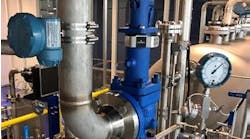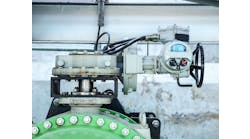The level simply wouldn’t stop cycling. Maintaining a reasonably stable level in the small vaporizer—to feed a gaseous hydrocarbon feed to a catalytic reactor—was crucial to reliable operation, as liquid carryover to the reactor would cause a shutdown. But no matter how much the tuning constants were increased or decreased, the cycling wouldn’t stop.
Loop tuning practices vary widely, from making the best of default values that haven’t changed since commissioning, to highly sophisticated, online model-based adaptive control. Despite its potential to reduce variability, increase operator confidence, and maximize rates and profitability, tuning control loops can be painfully random, sometimes relegated to individuals whose training is limited to knowing where to click the mouse.
Digitally integrated field devices, whether through HART, wireless or fieldbus, offer opportunities for tuning and optimization that were elusive in prior decades. An oft-repeated maxim from our wisest old sages of control is that all good tuning relies on the innermost, “lowest” components of the loop, especially the valve positioner. Not especially long ago, all positioners were pneumatic. Apart from some clever new motor-operated valves (MOVs), most process plant valve positioners remain essentially pneumatic, but are now fitted with numerous sensors, servos and microprocessor-based feedback control.
[pullquote]All valve positioners include aspects of control, with tuning constants and feedback loops. The all-pneumatic versions were proportional-only, force-balance mechanisms that manipulated bellows, balance beams, flappers and nozzles to position a valve stem in proportion to a pneumatic (often 3-15 psi or 0.2 to 1.0 bar) signal. While these rugged devices could function reliably for years on clean, dry instrument air, there were no sensors or feedback to account for valve stiction; low supply pressure; loose, broken or bent linkages, and so on. They can be fitted with connections for diagnostics, and many tuning programs have algorithms to diagnose positioner issues, but the opportunities for such analyses can be fleeting (during outages that might be years apart) and expensive, requiring trained factory techs to survey the site.
Times have changed. When they can be applied, digital positioners offer the opportunity to examine and optimize this “innermost” control loop. Here, the physical limits of the loop can be revealed—step tests and stroke analysis can be done when the loop is out of service or the valve is bypassed. And the degree to which the valve position (as seen by the positioner) follows the input signal can be monitored and trended in real time, all the time.
One of the most useful values to share with operators is this position feedback, and control engineers find it extremely useful as well, especially for those loops that defy tuning. When the innermost loop is having issues, no digital magic exists on the DCS level to remedy it—the DCS controller’s stability and precision will never improve that of its final element.
Once you begin staring at trends of controller output versus valve position, you might be compelled to question, is the response (or lack thereof) caused by valve friction, or is it just communication latency? That is, if a valve appears delayed in following the controller output, how much might be attributed to slow or delayed communication from the field device? When attempting to improve or optimize loops, we should be cognizant of the limitations of our analysis tools. Does our trend package use OPC or some facsimile thereof? Do different servers supply the DCS controller’s output versus the valve feedback position? Unknown latency might exaggerate valve performance issues.
In our case of the vaporizer level, scrutiny of the inner flow loop revealed that no change in flow could be seen for large movements in the valve. A faulty pneumatic positioner was to blame, and a digital positioner was ordered to replace it. Don’t delay opportunities to give your plant improved control though the application of modern positioners.






